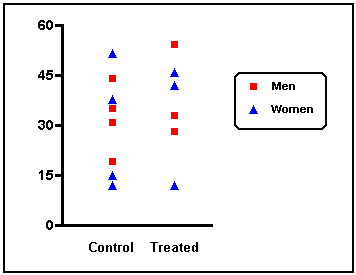

If you instead want a graph that shows only the mean and error for each data set, double click on any data point to open the Format Graph dialog and choose "One symbol per column" and the type of error you want to show. In statistics, a volcano plot is a type of scatter-plot that is used to quickly identify changes in large data sets composed of replicate data. Prism will create error bars from all the data points in each column. You'll find the choices for this at the bottom of the Format. Prism can also add grid lines at specified points along the axis. If you can compute or find the X and Y for each study you want to include on the graph, Prism can plot it with no trouble. To make the graph above, start with a Column table and enter all the data points for each data set in a column. Prism has no special tools to create funnel plots, but fundamentally they are just XY graphs. All the data values for each group should be entered in a single column. If you want to compare groups and show every data point along with lines for mean and error for each group, start with a column table. To show mean and error instead, choose Mean and Error from this drop-down menu instead. To format an XY graph to show each data point as in the graph above, click on the Format Graph button on the toolbar, select Global to choose all data sets, and choose to Show each Replicate. Here is the data table for the graph above. Start with an XY table if you want to show all your replicates for each X value. When you make your graph, you can choose to show all the replicates on your graph instead of error bars. With an XY data table, each X value can have several replicates for every data set. Three of these can be used to create scatter graphs. The Wikipedia article on Volcano plots will teach you more.Prism offers six distinct types of data tables.This takes advantage of the fact that the difference between two logs is equal to the logarithm of their ratio. If you care about ratios, consider transforming all the values to logarithms and then run the multiple t test analysis. But the t test looks at differences, not ratios. You'll often see volcano plots where X is the ratio between the two means.The Volcano plot is created automatically and Prism does not offer the choice to not create it.Prism automatically draws a grid line at X=0 (no difference) and at Y= -log(alpha) if you used the method of statistical significance and -log(Q) if you chose the method of FDR.If you chose the FDR approach, the Y value plots the minus logarithm of the q ratio.If you chose the statistical significance approach with correction for multiple comparisons, the Y axis is the minus logarithm of the multiplicity adjusted P value.So if the P value is 0.01, then the logarithm (base 10) is -2, and the value plotted on the Y axis is 2.0. If you chose the statistical significance approach without correcting for multiple comparisons, then the Y value in the volcano plot is minus one times the logarithm of the P value.The value plotted on the Y axis depends on your choices. A dotted grid line is shown at X=0, no difference. The X axis plots the difference between means. When you run multiple t tests, Prism (starting with version 8) automatically creates what is known as a volcano plot.Įach dot represents one row in your data table.


 0 kommentar(er)
0 kommentar(er)
